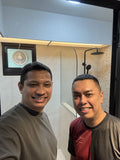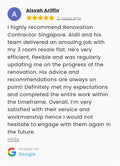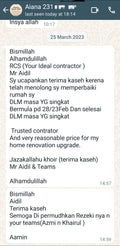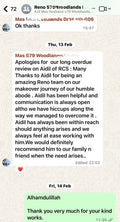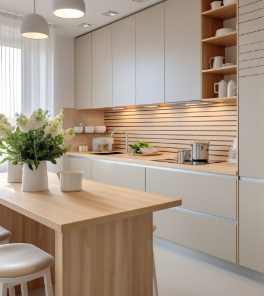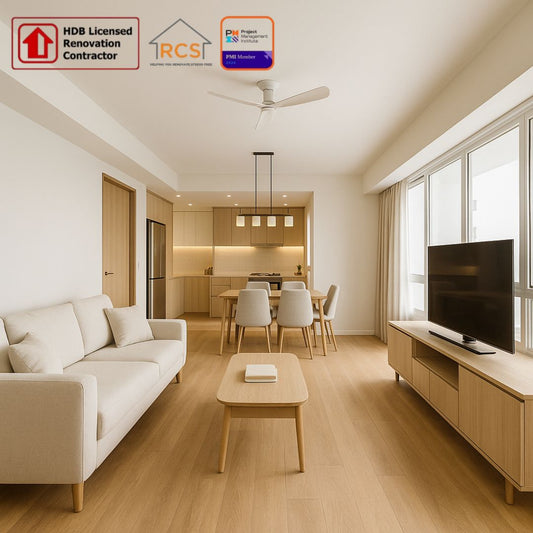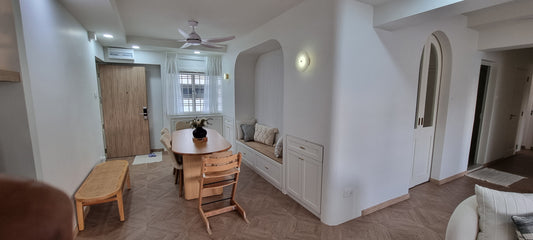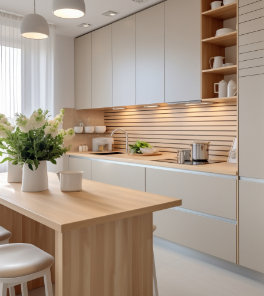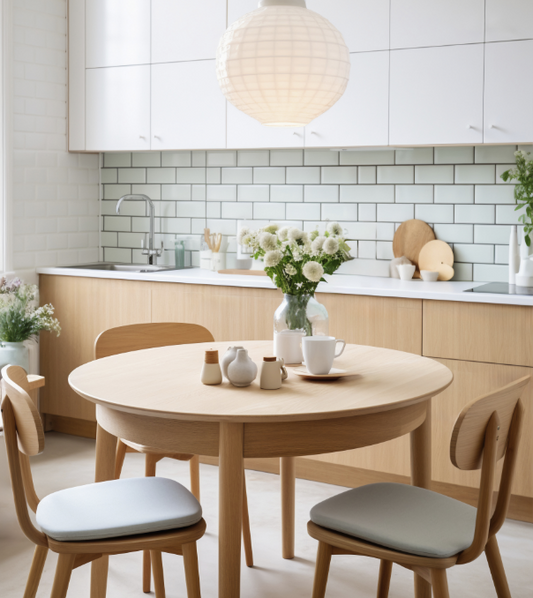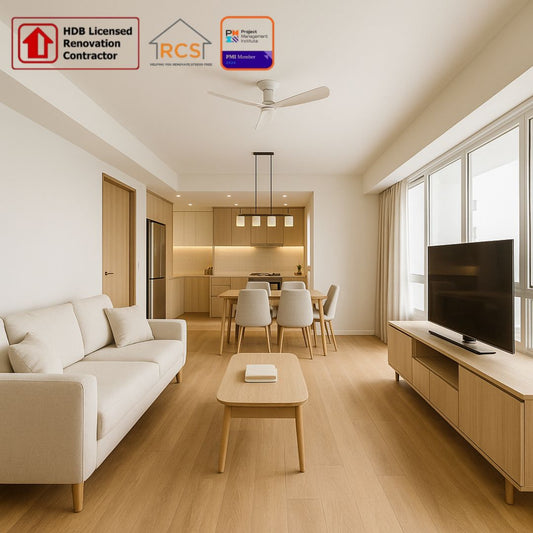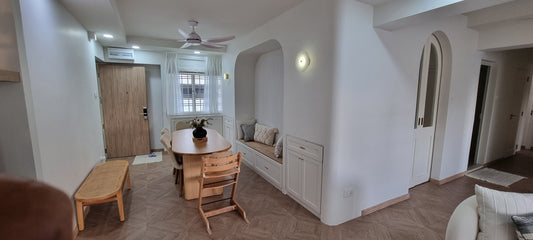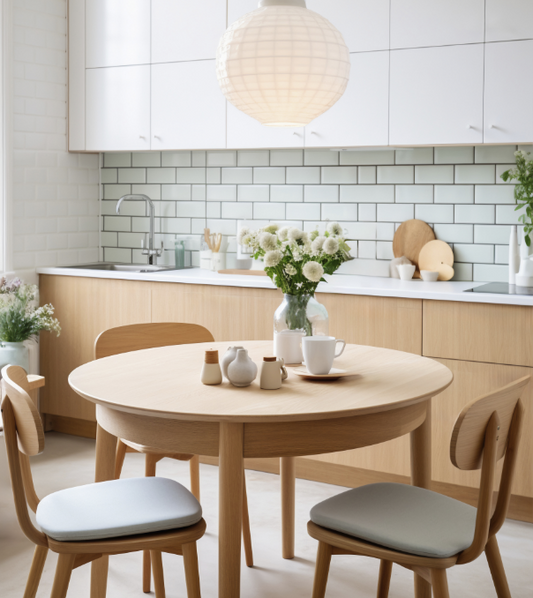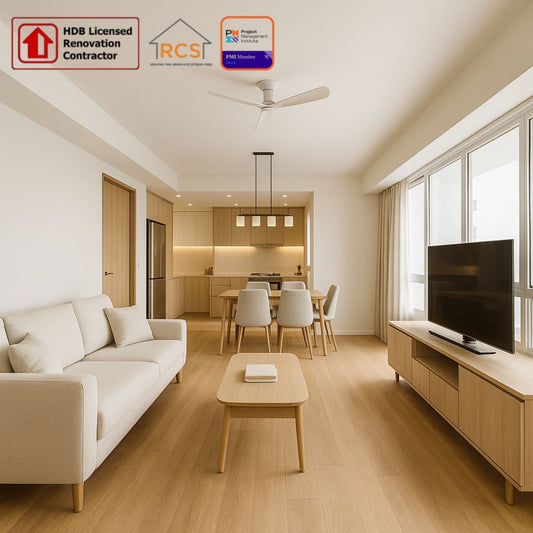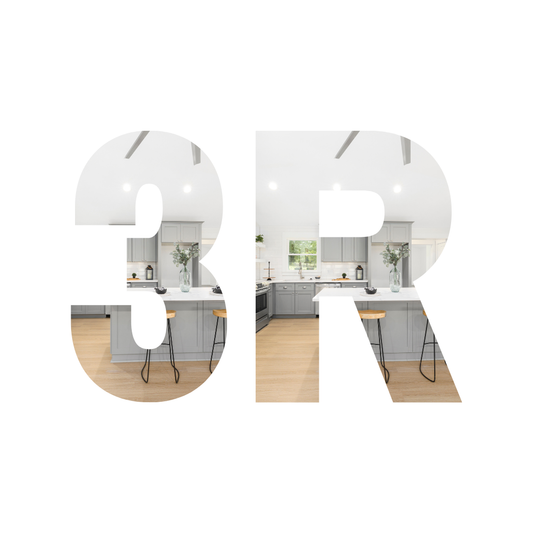I am going to share with you some options here for your kitchen sink, so you will be more aware of what you can do with it and also the costs involved when you decide to do this.
Normal Kitchen Cabinet – fabricate with solid plywood, inside is white or color(more pricey). Laminate finish on the outside, with ABS trimmings for the doors. Normal kitchen worktop for this is solid surface(which I have stopped using), quartz or kompac plus.
- Solid surface – top is good because of the join lines. After putting together the solid surface top, the join lines can be sanded down until it is no longer visible. Solid surface is not durable, scratches easily, and not heat resistant. Although some sites label them as non porous, some types do stain easily. Especially when it is white.
- Quartz – non porous. Downside is the join lines in the middle and at the back, 50mm backing. Scratch resistant, but not scratch proof. Does not scratch easily. Heat resistant, with a very high heat limit. Very durable.
- Kompac plus – non porous. Material is a type of hardened plastic. Very strong. Heat resistant, with a very high heat limit. Scratch resistant but not scratch proof. Downside is the thickness. Although younger couples like the thinness more. Many designs to choose from. Visible join lines. Nicer without a backing, or with a matching backsplash.
Of course there are other worktops like marble etc. But the above are some of the most commonly used worktops in the market here. With the priciest among them being the quartz. Solid surface is the cheapest, and kompac plus is in the same price category with a tier 1 quartz.
Now back to the topic of this article. First steps in preventing your kitchen cabinet from water seepage is to keep it dry after each use. Meaning, there is a dedicated towel/cloth there to dry the areas around it after each hand wash, or after each dishwash. This will definitely help in the lifespan of the kitchen cabinets.
To make this easier for you, undermount your sink instead of doing a top mount. This will eradicate the silicone peeling from the sides of your sink if it is a top mount. Not to say that the silicone would not peel from the undersides of an undermount sink. The silicone from the sides of an undermount sink will definitely get dirty more easily. But water seepage is more easily prevented this way, then with a top mount sink.
Next is to use a waterproofing board for the carcass of the sink area instead of the usual solid ply carpentry only. This waterproofing board is known as WPC. This waterproofing board is mainly to prevent the sink area of rot if water seeps through. As WPC is waterproof. It is not as strong as solid ply, but we can make it as sturdy as it needs to be to last and stand the kitchen cabinet usage. On a side note, we also upgrade the soft closing hinges at the sink area to 304 stainless steel hinges. This will help prevent those hinges from rust in the long run as the sink area is our most favourite place to store our detergents and aerosols.
The above are two very useful ways to prevent future water seepage to your kitchen cabinets. However, there is a last one. This last one involves using a Quartz top from Aura stone and also their sink. They have designed their sink to fit with their quartz in a very unique way, never before seen in the market. This will not only prevent, but also eradicate the problem of water seepage. The only downside is, their quartz is 15mm in thickness. And their sink is quite pricey, but definitely worth it if you have the budget.
I am going to end this post by not mentioning about concrete sink support, as that item is in another category of its own. It does not fall into our topic of water seepage in this article. I hope that this article has been of value to you. Please do share it with your friends if you think that it can also be beneficial for them.
Talk to you again soon in the next article.



